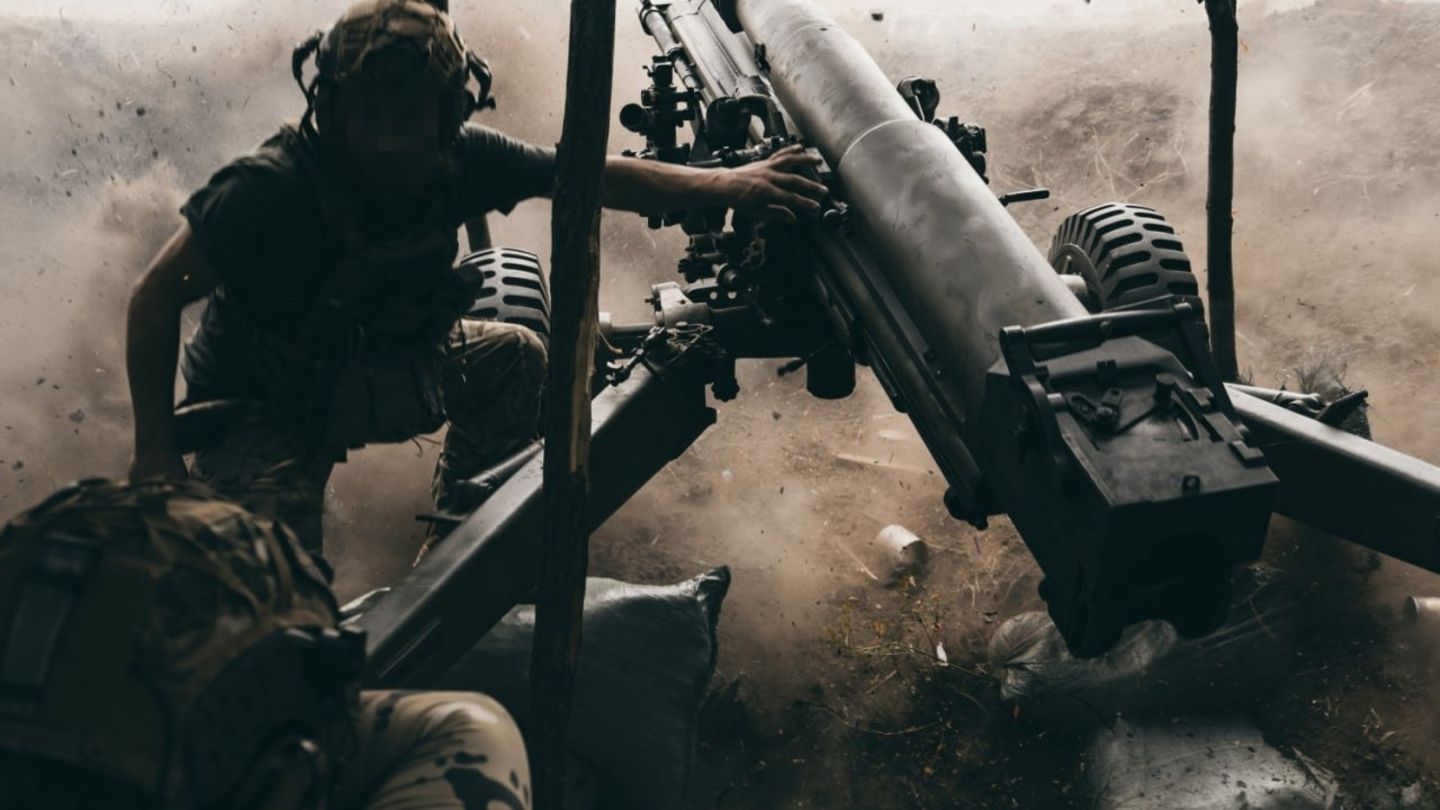Kiev successfully defends the city of Kharkiv, but village after village is being lost in the Donbass. There are not enough troops to hold both fronts.
Two months ago, the Kremlin opened a new hot combat zone north of Kharkiv. There were several assumptions about the motives. The number of troops was far too small to capture the city of one million. But the attacks could encourage the population to flee and paralyze the economy of the metropolis. Then the Kremlin wanted to set up a security zone on the Ukrainian side of the border to stop the shelling of the Russian city of Belgorod.
The actual goal, however, was different. In order to protect Ukraine’s second-largest city, Kiev had to send reserve troops to the front, and even elite units were taken from the front in the east and brought to the north. There, Kiev was able to contain the initially critical situation, but was unable to resolve it. Since then, the Russians have not been able to advance any further, but the Ukrainians have not been able to push them back decisively either. In the small town of Volchansk, the enemies are in a double-sided encirclement between the high-rise district still held by Kiev – the citadel – and the industrial area partly captured by the Russians.
Videos document the movements of the front line
When it comes to our own losses and those of the enemy, the claims are difficult to verify, even if they are accompanied by some recordings of successes. The situation is different when it comes to movements on the ground. The days when every shooter could publish video clips are over. But both sides continue to document their successes every day with a flood of videos. These, in turn, can be localized. As a result, we sometimes know exactly where the Russians and where the Ukrainians are sitting, right down to the block of houses, as is currently the case with the larger apartment blocks in Volchansk. The Ukrainians tried to keep the Russians’ advance into Niu York a secret for several days. Absurd, because the Russians documented their presence. Finally, the Ukrainians showed a clip of a successful attack in the middle of the town, thereby indirectly admitting that the Russians had long since established themselves there.
The front in Donbass is slipping
In the north there is a murderous stalemate, in the east Putin’s strategy is working. Since the Kharkiv front, the Russians have been advancing steadily there. There are no deep, operational breakthroughs, which will probably never be seen in this war. It remains a tough battle for position. But here the Russians regularly achieve gains of several kilometers in depth. For example, by building tunnels under the front, using existing pipes or by a successful attack by stormtroopers with quads and enduros.
Kiev has not managed to repel any of these incursions. On the contrary: once the Russians have captured a “finger” in Ukrainian territory, they expand it in all directions. In the language of Soviet doctrine: they “make the flower bloom”. Compared to the mobile battles of World War II, all of this is still happening in slow motion. The Russians have achieved clear successes at three crucial points. In the town of Krasnogorovka, they have expelled the Ukrainians from the districts with high, solid buildings after months of fighting. The defenders will not be able to hold on to the remaining districts of dachas. In fact, the city has fallen, even if the Ukrainians can still cling to its edges for a few more weeks.
The situation is not so bad at the mountain fortress of Chasiv Yar. Here the Russians have conquered all the areas east of the Donbass Canal and are now trying to flank the western part, just as they did with the eastern part. So far the Ukrainians have been able to slow down the advance, but never really stop it. A similar picture is seen in the settlements around Nie York, the Russian name is Novhorodske. Here the Russians have advanced to the center and are threatening to cut off the neighboring Ukrainian troops and their fortifications.
Fire brigade units are missing in Donbass
The Ukrainians’ numerical inferiority is evident again and again. To drive the Russians back, they launch a counterattack with just one armored personnel carrier and a handful of soldiers. The elite formations fighting near Kharkiv are missing here. They had previously taken on the role of the front-line fire brigade. They were sent wherever it looked as if the Russians might break through and in many cases were able to hold the line. This would not be possible without these well-equipped and motivated troops.
Even the better supply of artillery shells could not noticeably stop the Russians. The footage of drone operations paints a deceptive picture of the war. These types of individual successes say little to nothing about the course of the fighting. However, they do show that Kiev can at least stand up to the Russians in the drone war. But we must not forget that the Russians also show such videos. For example, how two observation drones spot a US Abrams tank and then a dozen FPV drones pounce on it. More significant are the strikes in depth, for example by the Ukraine’s Himars launchers. But here too, despite the recent deliveries from the USA, Kiev does not clearly have the upper hand. Russian observation drones can operate deep in Ukrainian territory and, if they have identified a worthwhile target, request strikes from Iskander missiles.
How long can the Ukrainians hold out?
Since the beginning of the war, Kiev’s hopes have been based on the assumption that Russia is suffering much greater losses than Kiev. The Russian attacks, which have been stopped by drones and artillery, are seen as proof of this. What is overlooked is that many attacks have been successful recently. And that the positions of the Ukrainian defenders are being crushed along with the soldiers by weapons such as Russian glide bombs and their thermobaric rocket launchers. There is currently no sign that the Russian pressure on the Ukrainian positions, which has been going on for months, is easing.
The second hope is that the Russians will no longer be able to bring enough armored vehicles to the front by the end of 2025. The majority of the “new” Russian battle tanks, armored personnel carriers and transporters consist of refurbished and modernized models that have been rotting away in warehouses. And these warehouses are rapidly emptying. A problem that the Russian leadership is also aware of. It remains to be seen how the Russians intend to address this foreseeable shortage. In other words, whether they will be able to organize additional old material and/or whether they will be able to significantly increase the total number of new vehicles built. In any case, the time until the end of 2025 is long. Too long for the troops in the east, who will have to hold out until then.
The short-term hope lies in the F-16 and Mirage fighter jets. They are intended to stop the Russian bombing offensive and then enable strikes in the Russian hinterland. The next few months will show whether they are successful. If not, things will look bad for a free Ukraine.
Source: Stern
I have been working in the news industry for over 6 years, first as a reporter and now as an editor. I have covered politics extensively, and my work has appeared in major newspapers and online news outlets around the world. In addition to my writing, I also contribute regularly to 24 Hours World.




